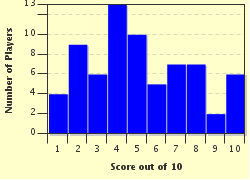Quiz Answer Key and Fun Facts
1. When the Commonwealth of Australia came into being on 1st January 1901, it was a parliamentary democracy without a parliament, at least until the first election. The first interim Prime Minister had the task of choosing an interim cabinet, which cabinet would organise the first election. The task of selecting that first Prime Minister was the job of the first Governor-General, the Earl of Hopetoun. His choice was a surprise to everyone.
Who was this initial choice of the Governor-General, considered so unacceptable that he never actually served as Prime Minister?
2. Several prime minsters of Australia have served more than one term, as there is no restriction on how many times a person can serve as PM. Three of the following four people have been re-elected as PM after a spell in opposition. Which of these four did NOT win re-election after time in opposition?
3. Who was the first Australian Prime Minister to be elected PM three times consecutively?
4. One person served continuously as a member of parliament (as well as Prime Minister for over seven years), from the first parliament in 1901 until 1952. Who was that long-serving man?
5. Three of these four Australian Prime Ministers died while in office. Which one of these four did NOT die in office?
6. Many Prime Ministers have been defeated at a general election. John Howard was the second PM to also lose their own seat at an election. Who was the first PM to lose his own seat in parliament?
7. How is it that Francis (Frank) Forde served as Prime Minister for a period of only 8 days?.
8. In Australia's federal parliament, there have been numerous changes of PM without an election. Of the following methods of changing leader, which method has NOT seen in Australia at any time during the 20th century?
9. Who became Prime Minister (a role reserved for a member of the House of Representatives) while he was still a Senator? He resigned as a Senator, and stood for a seat in the House of Representatives to fulfil the requirements of a Prime Minister.
10. Who was the first woman to hold the office of Prime Minister of Australia?
Source: Author
DavidGordon
This quiz was reviewed by FunTrivia editor
gtho4 before going online.
Any errors found in FunTrivia content are routinely corrected through our feedback system.

